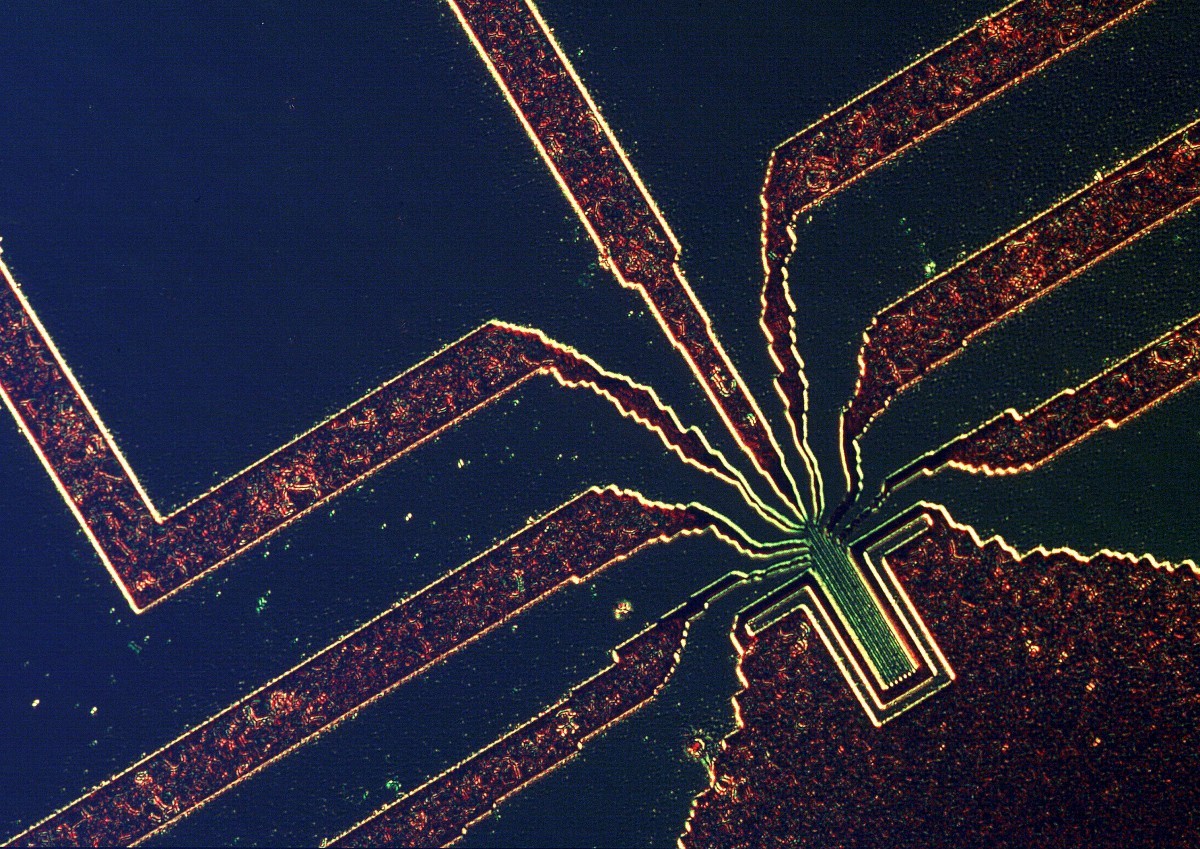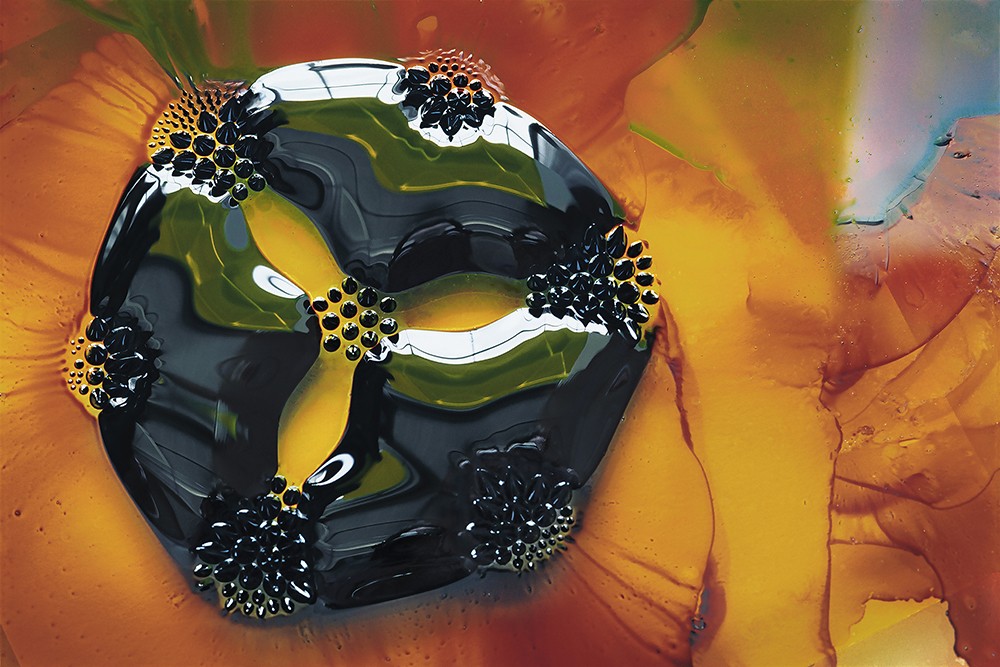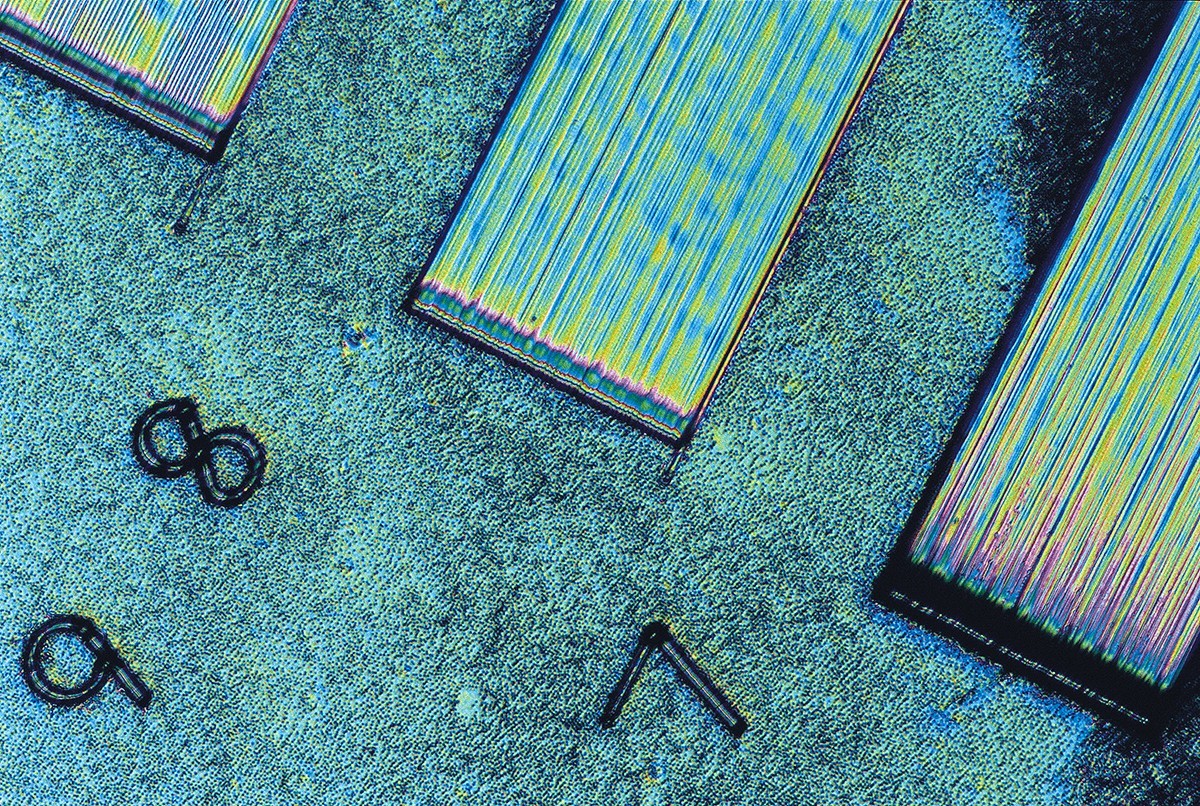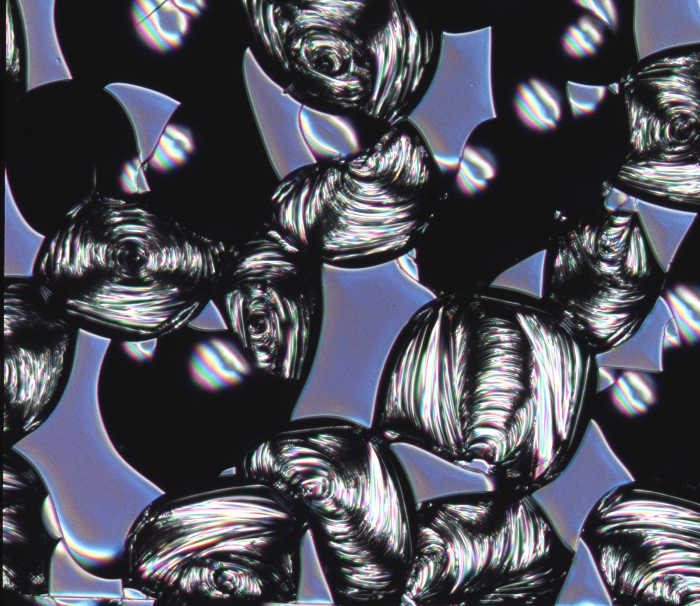A calligraphy pen, a necklace, a quarter, an old piece of paper with the writing almost worn away. These were the everyday objects students from the Concourse class, “Objective Narratives: Portraits of Science through Material Culture and Photography,” brought to guest lecturer Felice Frankel, a research scientist in the Center for Materials Science and Engineering at MIT and a lauded photographer. The assignment was to bring an object, any object, which Frankel would then scan and blow up on her flatbed scanner at home. In the next class, students would then have the chance to view these ordinary things with an entirely new perspective — enlarged, abstracted, open to new interpretations. When a half strand of hair is dramatically enlarged, all kinds of new questions can emerge.
Frankel has made a career of communicating the rigor and wonder of science through visual methods, from depictions of oxidizing metal to bacteria colonies, nanocrystals to microfluidics. She is interested in “imagery as a means of inquiry,” an invitation to further discovery of the physical world, both the observable and the microscopic. In her work, the image is a vehicle to understanding. She makes scientific images — at once visually arresting and content-rich — to teach, to learn, to communicate, and to ignite a particular brand of scientific curiosity about the world around us.
Frankel’s work in this realm began twenty years ago as a Loeb fellow at Harvard, when she began to collaborate with the renowned Harvard chemist George M. Whitesides. By employing visual techniques — composing, abstracting, coloring, layering, and refining — she was able to communicate Whitesides’ research on microscopic phenomena in a more comprehensible way. One such result, a pattern of blue and green water droplets, landed on the 1992 cover of Science journal. Through this experience, she says, the researchers became more conscious of their own processes, tuned to the ways in which their experiments could be extended and deepened. “In forcing the investigator to manipulate the system,” Whitesides has said in an interview, “you can cause the experimenter to think about what’s going on and reach a higher level of understanding.” Frankel’s ultimate goal is to have scientists think more seriously about the representations of their work from the very start of the research process.
Frankel’s tenure at MIT began in 1994 when she was named the first Artist-in-Residence at MIT’s Edgerton Center, established to continue the legacy of the late scientist and photographer Harold “Doc” Edgerton, under the unwavering support of Dean of Undergraduate Research and Professor of Mechanical and Ocean Engineering Kim Vandiver and the late Robert Silbey, former Dean of Science. As a visual interpreter, Frankel is always “in service to the scientist,” she says, helping them to communicate their research in a way that is enlightening and accessible to a vast audience. It is an intimate collaboration, born of a mutual trust and based on a careful fidelity to the subject matter. If her images are at all digitally enhanced, Frankel takes careful measures to lay out the precise nature of these manipulations.
Because representing is understanding, Frankel explains. To compose a picture, after all, is to seek the same kind of clarity and elegance that mathematicians and scientists pursue in formulating their equations and experiments. She wants to help scientists become better communicators, producing images that engage other specialists and a lay public alike. In advancing this cause, Frankel is a tireless pedagogue — which brings us back to Objective Narratives.
In the class, students are benefiting from the expert guidance of Frankel and two other guest lecturers, Pulitzer-winning photojournalist Essdras Suarez and photographer Jan Kostecki. The goal is for students to use photography to support a more creative and conscious writing process by using its power both to observe and to communicate. As teaching assistant Ellan Spero says, “Felice shows us that by making conscious design decisions with conceptual communication at the forefront, a visually compelling image and one that conveys strong meaning are one and the same. It is a common misconception that good ideas, or interesting data can simply ‘speak for themselves.’ By walking us through her decisions behind crafting each particular image, Felice asks us to think critically about what is often taken for granted or overlooked when discussing scientific processes and narratives of discovery.”
Frankel’s work is, above all, fueled by a profound love of science. In her office, she pointed out a scratch in the gray formica of the table, and began to enumerate all the ways in which scientific knowledge is embedded within this simple physical detail — from the width of the line to the nature of the material to our perception of the table’s color. “Everything that we see and all that we are is science,” Frankel says.




